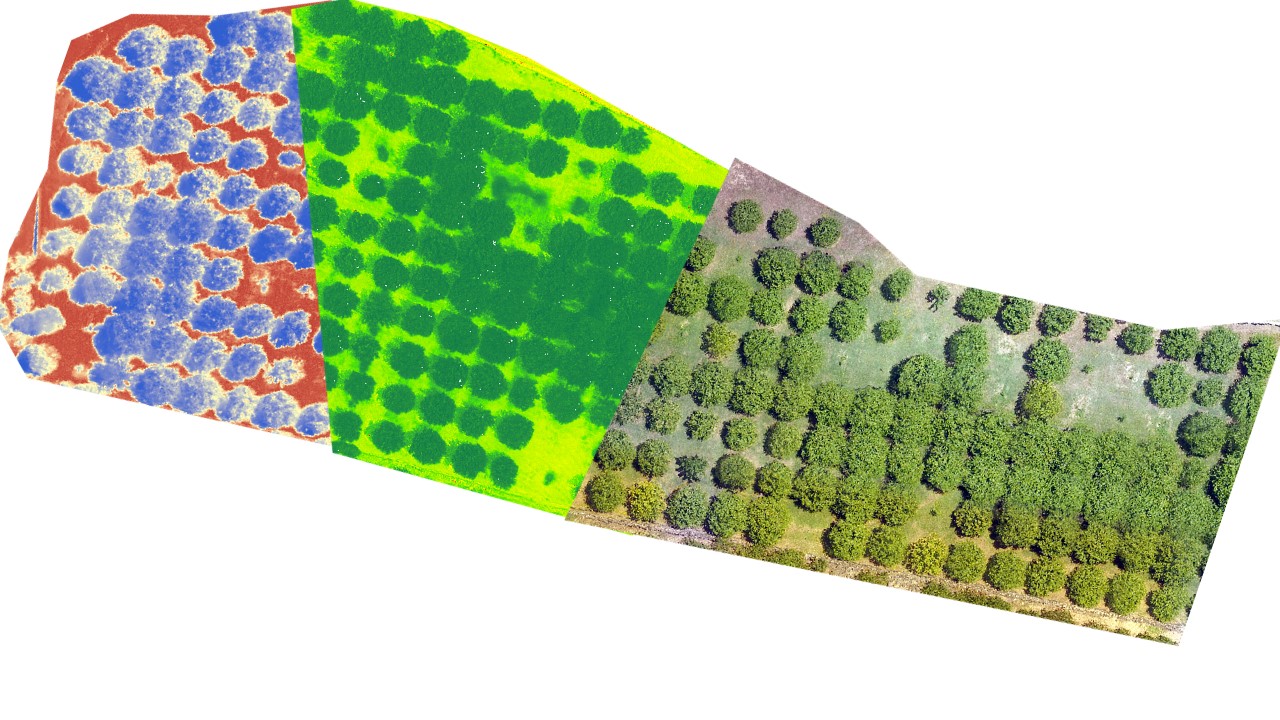
Chestnut tree
 General information
General information
The chestnut tree is an original crop from the rural mountain areas of Extremadura, mainly found in the North (Valle del Jerte, Valle del Ambroz and Sierra de Gata) and Southeast (Sierra de las Villuercas) of Cáceres. Interesting crops have also been grown in other areas of the region, such as Valencia de Alcántara, La Vera, Hurdes and Cabeza la Vaca. In recent years, the chestnut has been revalued as a product, making this product one of the most profitable ones in Extremadura. The sweet chestnut production is increasingly popular and this has given rise to the establishment of new plantations in irrigation lands as well as new varieties.
 Growing requirements
Growing requirements
The chestnut production industry is very dynamic at present and demands solutions to the issues associated to the transformation of the growing system with new varieties and patterns as well as changes in the agronomic practices. There is insufficient information on the behaviour of the chestnut tree as a crop resulting from the regressive trend that it suffered in Europe in the past decades. Currently, the increase in the water requirements of crops, the use of more productive varieties and the improvement and modernisation of the irrigation facilities in the mountainous areas of the North of Extremadura have established irrigation as a habitual agronomic technique in chestnut tree plantations.
From a plant-health point of view, there are two major diseases, i.e. the ink and the chestnut blight diseases, which are severe issues with potential to limit the profitability of the crop, especially if the trend towards its intensification creates favourable conditions for their dissemination increase and, in turn, their incidence. In fact, the development of strategies to keep these diseases under control has been a demand being imposed by the industry at the various meetings of the Chestnut Commission of Extremadura. On the other hand, the Asian chestnut gall wasp is a recently-introduced plague that requires the use of parasitoids to keep it under control.
In this respect, there are several lines of research being promoted by the various working groups at CICYTEX who work jointly. These lines of research are also developed in cooperation with associations and groups of producers, companies within the industry and the University of Extremadura. The tests under development focus on growing techniques (irrigation and fertilisation strategies) and on a comprehensive management of the ink disease and the chestnut blight disease.
 Calculation of the water requirements
Calculation of the water requirements
At CICYTEX we have opened a line to raise awareness of the chestnut water requirements throughout its growing cycle, to identify the phenological periods that are most sensitive to water shortage and to determine an indicator of the crop’s water status as a tool for irrigation management.
 Fertilisation
Fertilisation
In terms of fertilisation, we are working to obtain indicators of the nutritional condition of the plant in order to establish a system for the regulation of fertigation programs that may allow us to adjust the inputs to the crop requirements.
 Chestnut tree diseases
Chestnut tree diseases
With regards to the diseases affecting this crop, CICYTEX focuses its work on the two most severe diseases impacting the chestnut tree, i.e. the ink and the chestnut blight diseases. In the case of ink disease, which is caused by the Phytophthora spp., we work on the assessment of its incidence and the relationship between the disease and the agronomy of the crop in irrigation farming conditions. The purpose of this line of research is to make progress in the design of integrated management programs through the implementation of adequate irrigation strategies, chemical treatments with endotherapy and the application of corrections to the soil as integrating tools.
In the case of the chestnut blight disease, which is caused by a fungus called Cryphonectria parasitica, the purpose is to implement a process for the biological control of the disease with hypovirulent strains. The first step towards it is to determine the Vegetative Compatibility Groups (VCG) existing in the various chestnut areas that are affected by chestnut blight disease in our region and to identify the isolated hypovirulent strains that are compatible with these VCGs. The reproduction of the isolated hypovirulent strains that are most adequate for use in biological control and their experimental application in field conditions are the next steps towards the attainment of the proposed objective.







